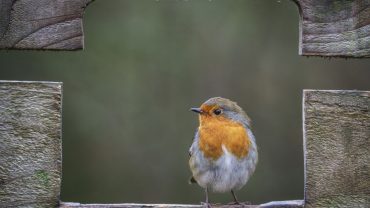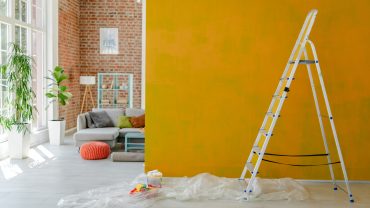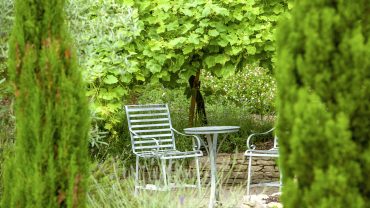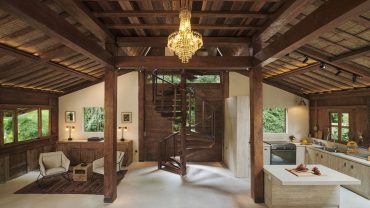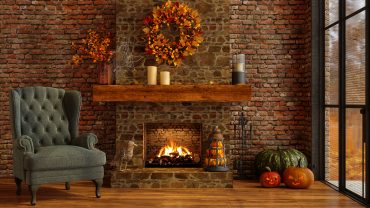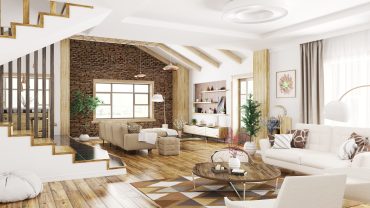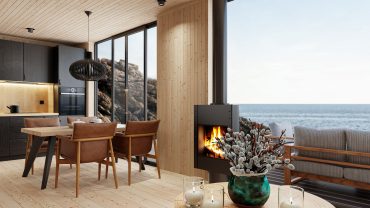To some, the phrase “traditional interior design,” evokes a sense of timeless elegance through a homage to the past. Others might think of formal and old-fashioned decor. Indeed, it can be tricky to nail down the exact connotation of a style defined as “traditional.” But we’ve got our hammer at the ready in order to do just that.
In this article, we explore its origins, uses and essential characteristics. We ask “what is traditional interior design?” and offer insights into how it can be seamlessly integrated into contemporary living spaces.
What is Traditional Interior Design?

A traditionally styled living and dining room. (Credit: Glasshouse Images via Getty Images)
Traditional interior design is a harmonious blend of classic elegance and comfortable functionality, characterised by symmetrical layouts, rich materials, and timeless decorative elements. It’s characterised by attention to detail, refined use of materials, and an overarching sense of harmony and order.
In traditional home design, rich colour palettes range from muted neutrals to deep, regal hues. Luxurious fabrics like silk, velvet, and brocade typically dress the windows and furnishings, while wood, often darkly stained or painted, features prominently in the furniture.
Traditional design is about creating a sense of history and continuity, where each piece feels like it has a story to tell.
Historical Influences and Evolution

A traditional inspired living space. (Credit: David Papazian via Getty Images)
The roots of the traditional interior style are deeply entwined with the architectural and decorative styles of the past. And, while it does not adhere rigidly to any particular era or place, it’s usually with reference to 18th and 19th century Europe, especially Victorian and Georgian influences. These periods emphasised craftsmanship and detail, seen in ornate woodwork, intricate mouldings, and elegant furniture.
Over time, traditional home decor has evolved further, borrowing elements from various eras and cultures, yet it has always maintained its classic foundation, balancing old-world charm with the functionality demanded by modern lifestyles.
Key Elements of Traditional Interior Design

A traditional living room, featuring classic lines. (Credit: Ivan Hunter via Getty Images)
The defining characteristics of traditional interior design come together to create its elegance, sophistication, and enduring appeal. Let’s look at each in turn.
Symmetry
Symmetry is a core tenet of the traditional interior style, creating a sense of balance and order. Furniture and decor are often arranged in pairs and positioned to mirror each other. This even extends to smaller details, including window treatments, cushion placements, and decorative accessories. This consistency reinforces the structured feel of traditional interiors, resulting in a harmonious and well-organised space. What’s more, traditional rooms typically have a clear focal point, such as a fireplace, with symmetrical elements arranged around it. This creates a sense of importance and draws the eye to key features.
Classic Lines
Classic lines in traditional design are typified by gentle curves, refined edges, and understated details. This blends well with other design styles, allowing for a versatile approach to decorating and furnishing a space.
Treasure Hunting
Rather than furniture shopping, much of traditional interior design is hunting for great finds. Artwork and antiques are often integral to the traditional interior style, adding layers of cultural and historical depth. Collected and curated over time, these pieces usually have a backstory, bringing character and uniqueness to the space. These collections can be displayed as focal points or used to accentuate other elements in the room.
Craftsmanship
Traditional design values craftsmanship and detail in everything from art to plasterwork. Items are chosen for their beauty and the skill evident in their creation, whether it’s a hand-carved piece of furniture or a finely painted portrait.
Skirting the Issue
Traditional interiors often include classic period features, including panelled walls, pillars, columns, and detailed, albeit not fussy, plasterwork, skirtings and cornices.
Calm Colours
Neutral tones are welcome in traditional design, particularly chalky whites and clayish greys, but it’s a mix of dusty pastels and warm, natural colours that really signify the style. Many paint companies have regency or heritage collections, often including hues such as eggshell blue, sage green and burgundy.
Patterns Galore
From floral to stripey, tartan to damask, patterns play a central role in traditional home decor. Boldly mixed and rarely matched, these are often layered to great effect.
Comfortable Materials
An integral part of traditional interior design is creating an inviting space and one of the best ways to do this is through tactile materials. Think plush velvet, fresh linen and enticing silk.
The World is One’s Oyster
Just as traditional style does not ascribe to a specific time, it’s also not restricted to one place. Whether it’s a chair or a pattern, these can be sourced from around the world.
Traditional Design in Modern Homes

A traditional living space featuring contemporary elements. (Credit: alvarez via Getty Images)
Blending traditional elements with contemporary design can be both challenging and rewarding. The key is to strike a balance, allowing the timeless beauty of traditional pieces to shine without overwhelming modern aesthetics. Incorporating classic furniture or decorative items into a contemporary setting can create a unique, eclectic look. When choosing traditional pieces, consider their scale and how they’ll harmonise with the existing decor to ensure a seamless integration.
Maintaining and Reviving Traditional Interiors

Upcycled furniture is often featured in rustic and traditional interior design. (Credit: Dougal Waters via Getty Images)
Preserving the beauty of traditional interiors involves a thoughtful approach to maintenance and care, particularly for antique furniture and décor. Reviving traditional spaces doesn’t mean a complete overhaul; sometimes, a fresh coat of paint or updated upholstery can breathe new life into a classic design. For those looking to add traditional elements to their homes, it’s helpful to try to source authentic pieces that truly represent the traditional style, whether through antique shops, specialised retailers, or custom craftsmen.
Traditional Interior Design

A traditionally designed bedroom, featuring panelled walls. (Credit: Andreas von Einsiedel via Getty Images)
Traditional home design offers a timeless appeal that transcends trends, providing a sense of comfort and elegance that’s both enduring and adaptable. It could mean embracing traditional home decor fully or simply incorporating elements of this classic style into a modern home. Indeed, the possibilities are endless.

